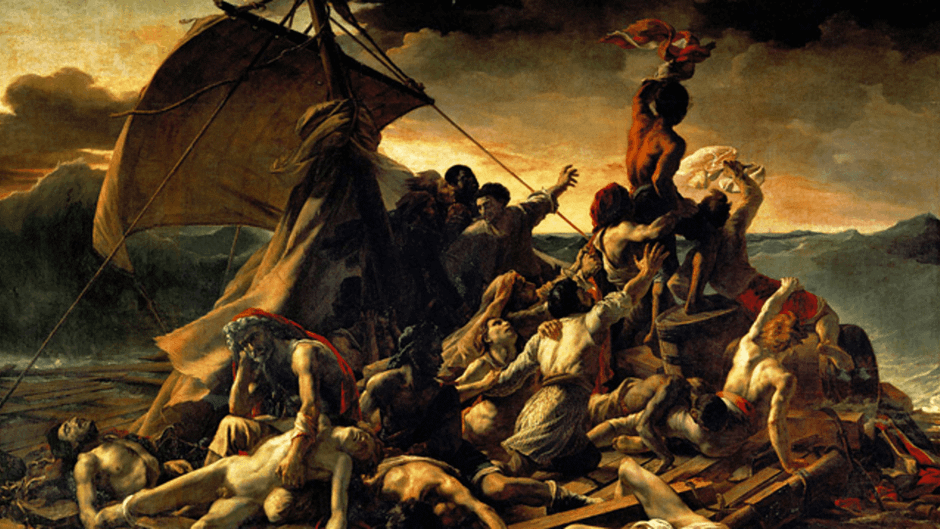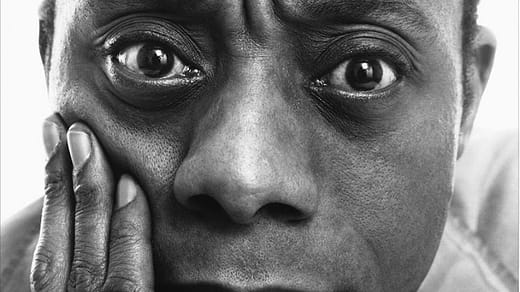Over Twenty years ago, I believed I was a visual artist. I was going to paint in the style of the classics via all subjects that would reflect me. They would be paintings of black males in a renaissance setting (a la Kehinde Wiley, who did this so much better than I ever would have).
One of my best friends, for a Christmas present, gave me a book with the artwork of The Louvre. This served two purposes at the time; one was my dream and desire to go to Paris and live the life of an “Artist”. The second was to go to the Louvre and lose myself in the paintings and the artwork of classic masters. In High School, even though failing French II, I was determined to go to Paris.
Out of all the paintings in the book, I kept coming back to one. It was titled, The Raft of Medusa by Theodore Gericault. I was struck by the realism of the painting, the men seemingly on this raft heading towards the light. I was even convinced that it was a photograph that Gericault had painted. It had to be when I saw how he captured the light of the setting sun on the backs of the men waving off into the horizon. I became obsessed with the detail of each man, living and dying on the raft.
Fast forward. I haven’t gotten to Paris yet (another post for another time) but when one of my friends was going I told her to “go to the Louvre and see The Raft of Medusa” as if it was the only thing of interest in Paris or even the Lourve for that matter. She went and sent me back a postcard saying, “Murphy, you are right…it’s beautiful and sad. And it’s huge!” I remember it didn’t look at big in the art book I was given, but when I looked at the size- it was 16ft by 24ft. My mouth dropped open – it was bigger than life itself.
The painting is based on the wreckage of a French frigate off the coast of Senegal in July of 1816. It was rumored that there were 150 soldiers onboard after their ship, which held 300, was left adrift and powerless. They were sent out on the raft to be rescued. I believe with very little food, water, and some wine all of which was running out of quickly (there were 140 of them on this raft) madness sat in. They were adrift for 13 days in the hot sun. It was said the crew were “crazed, parched, and starved…they slaughtered mutineers, ate the dead, and killed the weak.”
I was shocked when I found this out. The picture seemed to me of heroic gestures as they are reaching for the sun and the ship on the horizon that will eventually rescue the survivors. I wasn’t completely off base, Theodore Gericault was as obsessed with the story in Paris as I was with his painting. After doing intensive research and several sketches, Gericault painted and completed The Raft at the young age of 27. He entered the painting in The 1819 Paris Salon, where he had to retitle it “The Scene of a Shipwreck” (in French, of course) to avoid the tragic, realistic, gruesome nature of the painting.
The Raft of Medusa is an icon of the French Romanticism for its “heroic scale of the suffering of ordinary humanity”(an Aha moment for me). The painting was applauded for its realism. It is the reason I fell in love with it as a teenager. The image of tragic and how mankind still has hope. The Louvre acquired it after Gericault’s death at the age of 32 (he died young, too).
I can imagine the controversy over this incident and life-size painting. It was said the sailors fought over food and the direction of the raft. That they chewed on their leather belts and hats to fight off starvation. Some threw the sick and weak overboard, and others resulted in cannibalism. When the Raft was rescued some 13 days later, there were only 15 survivors, then shortly after 5 more died upon the land. Yet Gericault kept returning to this incident and the sketches to produce this life-size painting. Why?
I didn’t study fine arts, French Romanticism, or Gericault but we both saw some humanity in the painting. When I first saw it, very naively but, I saw the men waving at the ship on the horizon. I saw men holding on to hope, while others were clinging (literally) to death. I see bodies sprawled across each other, some nursing the sick, others cradling the dead. In the midst of the madness, I saw hope. I glimpsed and saw humanity at its worst and the possibility of being better.
This painting and many others inspire me with hope for humanity. As we are living through a pandemic many of us are looking for “the light on the horizon” to be rescued and saved. I would love to know what Gericault thought of his masterpiece that hangs in the Louvre to this day. I hope soon, I will be able to stand next to this large scale realism painting and still feel hopefully among our tragic times.





I believe that there’s beauty and hope within the madness. Their can’t be a good without the bad, therefore in times like these, times where history seems to repeat itself with sickness and protest, it will all be mean’t for something greater. We as people go through tough times, but there are moments when we realize those tough moments made us stronger, made us brave, we become greater begins because of it. Because through those maddening times, we always have people a light to guide us through.